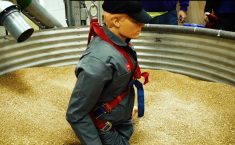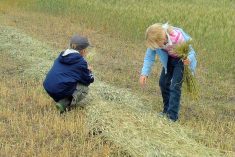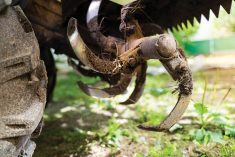Every year, underground infrastructures and utilities are unintentionally struck across Canada. Unsafe digging could result in serious injury or death, fines and repair costs or interrupted services. Although many underground infrastructures and utilities are found in urban areas, rural areas also have a number of these services. Don’t risk hitting or disrupting an underground utility when there is a fairly simple locate process.
Examples of activities that require a utility locate include:
- Ground levelling
- Drain tile installation
- Sludge spreading
- Terracing
- Clearing/brushing
- Fencing and landscaping
- Reducing or adding soil cover
- Excavation
- Deep tiling/ subsoiling
- Augering
- Trenching
- Stockpiling/ storage/parking
- Earth moving
- Blasting activities
- Drainage ditch cleanout
- Building construction
- Controlled burning
Read Also

Gentle treatments for pain in the neck
Heading toward year-end, people unknowingly tense up against the cold and busyness, causing neck pain that can often be treated with appropriate support and gentle mobility, athletic therapist Kathlyn Hossack says.
Call a One-Call Centre or visit ClickBeforeYouDig.com to submit a locate request. This is an appointment for the utility to come to the location and make out the location of any buried utilities.
It usually takes three to five business days to complete a locate. You will be notified if a locate requires written consent. Once the locate process is completed, the utility company may grant consent without conditions, grant consent that requires certain conditions to be met to assure safety, or not grant consent to dig at all. Do not dig until you have confirmed all notified utilities have responded to your locate request.
Paint, stakes or flags are various ways that underground infrastructures owners mark where these utilities are. Each infrastructure has a unique colour assigned.
- Red: Electric power lines, cables, conduits and ducts or lighting wires and cable
- Yellow: Gas, oil, petroleum, steam or gaseous materials
- Orange: Communication
- Blue: Water
- Green: Storm sewer
- Purple: Irrigation/slurry
- Pink: Temporary survey marks
- White: Proposed excavation
Remember, customer-owned utility lines are your responsibility. Utility owners do not know the location of these lines.
- Canada: clickbeforeyoudig.com
- British Columbia: bc1c.ca or 1-800-474-6886
- Alberta: albertaonecall.com or 1-800-242-3447
- Saskatchewan: sask1stcall.com/request-phone or 1-866-828-4888
- Manitoba: clickbeforeyoudigmb.com or 1-800-940-3447
- Ontario: ontarioonecall.ca or 1-800-400-2255














